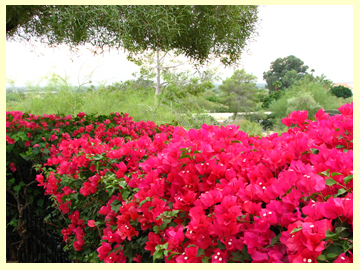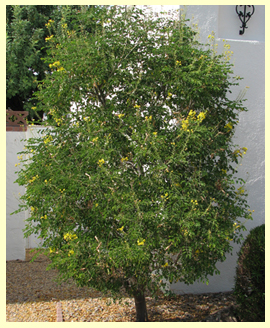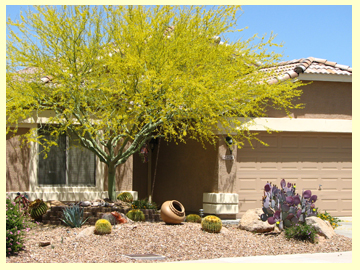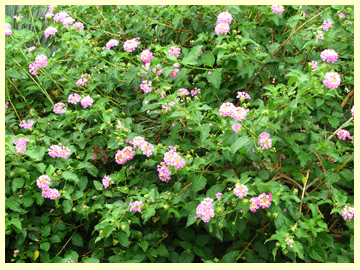
The Bougainvillea is another one of my favorite plants. Although Bougainvillea can be quite controversial due to sharp thorns. It is one of the most colorful plants in the landscape. For the most color, prune after flowering. Bougainvilleas bloom on new growth and provide color all year long. Although not a native desert plant, it tolerates our extreme summer heat well. Frost protection is required for young plants. Mature plants if hit by frost can be cut back in spring for a quick recovery. There are many different colors of Bougainvillea. I have found ‘Barbara Karst’ to be an outstanding variety with bright red color.

More commonly known as the Mexican Bird of Paradise and sometimes called the Yellow Bird of Paradise. This is another outstanding plant for any desert landscape. It is a broadleaf evergreen with compound leaves. The Mexican Bird of Paradise is quite versatile and can be trained into a small tree or a bush. Yellow flowers cycle throughout the year. It tolerates Arizona's extreme heat well, however it is frost sensitive.

The Palo Verde comes in several different species and new hybrid varieties. My favorite is the Cercidium Preacox or the Sonoran Palo Verde. It is native to the Baja region of Mexico and well acclimated to the Arizona desert region. Lime green bark and sculptured branches will accent any desert landscape. After establishment it is very easy to care for. Yellow flowers will fill the tree after a brief leaf drop in spring.

LANTANA
The lantana is a tropical and sub-tropical plant that is very popular in the Arizona landscape. It comes in a rainbow of colors and many different varieties. My Favorite is Lantana Camary var ‘Gold Mound’. It is a low growing plant often mounding to two to three feet in height. Bright gold flowers are present throughout the year. It responds well to regular pruning and shaping. After a heavy frost established plants can be cut back in the spring for a new season.